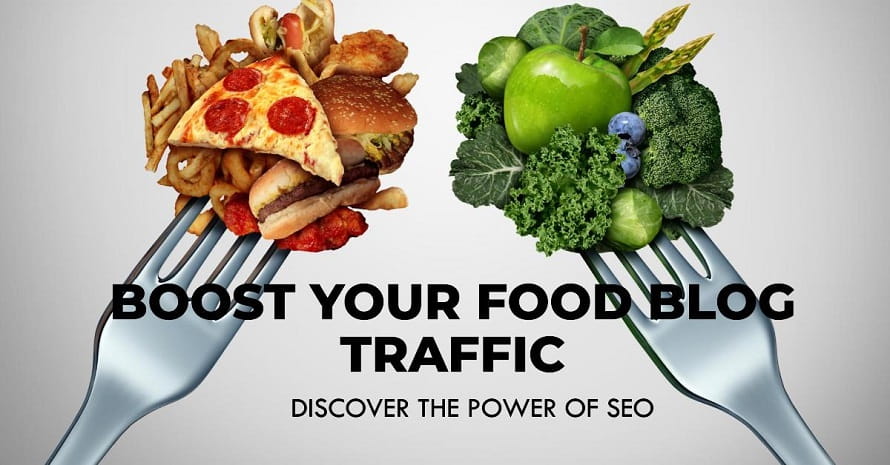SEO is an effective technique for raising search engine prominence, which in turn increases traffic to recipe websites and food blogs. Using pertinent keywords, food bloggers might draw in readers looking for particular recipes or cooking advice. Visitors will have a seamless experience thanks to mobile optimization, and quick load times will keep users interested. High-quality content signals value to search engines and encourages visitors to remain longer.
Examples of this include detailed recipes with eye-catching images. Click-through rates are increased when postings with structured data, such as recipe-rich snippets, stand out in search results. A strong online presence that attracts more visits to food blog sites is also created by constructing backlinks and advertising material on social media. Therefore, in this piece of writing, we’ll describe how SEO can increase traffic for food blog websites. So, stay with us here and keep reading below.
Top 5 Ways SEO Can Increase Traffic for Food Blogs Websites
It might be difficult to stand out in the crowded online world of recipe websites and culinary blogs. With so many chefs and food bloggers sharing their culinary skills, it’s critical to have a unique approach that draws readers in addition to showcasing delicious dishes. Search engine optimization (SEO) is useful in this situation. When utilized properly, SEO is a potent tool that may greatly boost visibility, engagement, and traffic. Knowing and using SEO tactics can significantly impact your success.
Therefore, in this article, we’ll highlight the top 5 ways SEO can increase traffic for food blog websites. So, dig deeper into this article to reveal the notion.
1. Keyword Research and Optimization
Keyword research is the foundation of SEO and aids food bloggers in determining the terms that their target audience uses when searching. It is essential to match your content with the keywords that consumers use when searching for certain recipes or food-related information. Your blog will rank higher in search results if you use more precise and long-tail keywords.
After you’ve chosen the appropriate keywords, you need to carefully incorporate them into your food website. These include blog titles, meta descriptions, headers, and content to make sure search engines can find your site. It will show up when people look for related subjects. This raises your website’s organic traffic and improves your ranking above rivals. Therefore, most blog owners consult with an experienced SEO company in Dubai to get the assistance of a professional team that uses the appropriate keywords and other SEO elements to rank your site.
2. Creating High-Quality, Engaging Content
Websites that provide excellent, captivating, and educational material are rewarded by SEO. In the digital age, content is king. For recipe websites and food blogs, this entails writing thorough, well-written recipes that benefit your audience. Google and other search engines favor content that is both user-friendly and packed with keywords. Easy-to-follow, educational, and useful content is part of their goal to give searchers the most experience possible.
For instance, providing detailed directions, suggestions for alternative ingredients, and cooking advice will keep visitors interested and guarantee that they remain on your website for a longer period. Search engines are better equipped to determine the value of your content when consumers stay on your website longer.
3. Optimizing for Mobile Devices
As smartphones and tablets become more popular, a sizable section of your readership will probably visit your food blog on mobile devices. Because mobile-first indexing is now used by search engines like Google, your blog must be mobile-friendly for SEO. For ranking purposes, this indicates that your site’s mobile version is regarded as the primary version.
Make sure your website’s design is responsive, which means it adapts to all screen sizes and offers the best possible user experience across all platforms, to optimize your food blog for mobile. This entails making sure that the website loads quickly, that fonts are readable, and that navigation is simple. In addition to increasing SEO, a mobile-friendly website lowers bounce rates, promotes repeat business, and keeps users interested.
4. Building Internal and External Links
A key component of SEO is link building, which entails both obtaining external links from other reliable websites and developing internal links within your website. Internal linking encourages visitors to explore more of your material and keeps them on your site longer by providing links to other pertinent topics or pages.
Backlinking, also known as external linking, is equally significant. Search engines view your food blog as authoritative and trustworthy when other respectable websites link to it, which raises your site’s ranks. You can develop a robust network of backlinks by working with other food bloggers, writing guest posts, or being listed in food-related directories. This will eventually boost your traffic and visibility.
5. Optimizing Site Speed
An important ranking element for SEO is site speed. Page loads should be fast for visitors to your food blog; if they take too long, they will probably quit, which will raise your bounce rate. Because a high bounce rate has a detrimental effect on SEO rankings, it is imperative that your site loads as quickly as possible. Image compression, file size reduction, browser caching, and the effective use of content delivery networks (CDNs) to disperse content are all ways to improve site speed.
Recipe photographs with many images or videos with large sizes can cause your website to load slowly if you don’t optimize them. You can improve user experience and search engine rankings by optimizing your media files to make your pages load more quickly. Therefore, you can hire an SEO expert to integrate effective strategies that rank your site above Google.
Are You Ready to Get an Effective SEO Service?
SEO is a vital tool for recipe websites and food blogs trying to boost user engagement, traffic, and visibility. Food bloggers may create a strong foundation for growth by being proficient in the essential elements of SEO, such as keyword research, producing high-quality content, mobile optimization, and utilizing rich snippets. A casual food blog can become a popular and profitable platform by implementing these five tactics, which will also increase organic traffic and search engine rankings.


